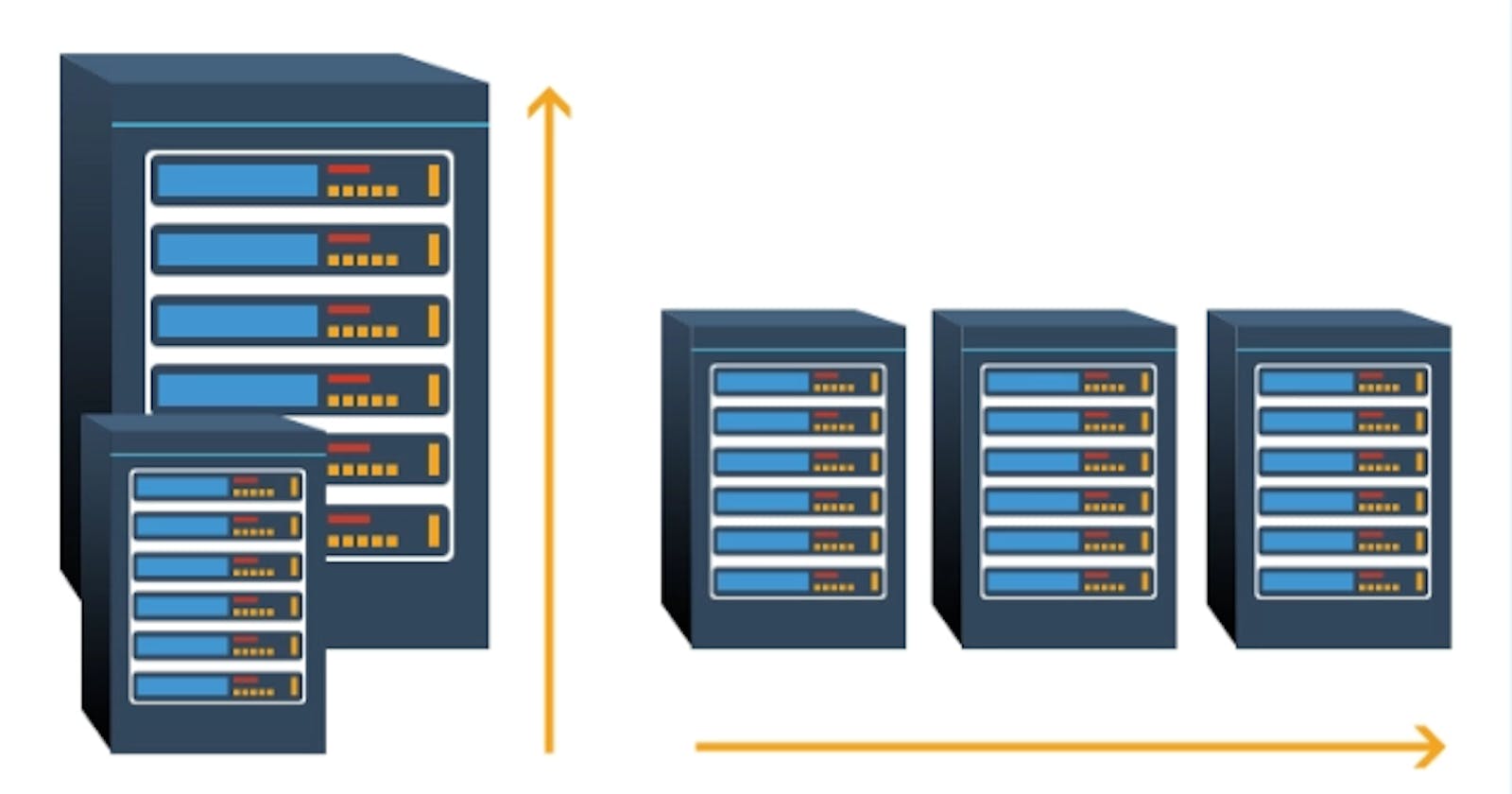Vertical Scaling vs Horizontal Scaling: Understanding the Difference
In the realm of scaling applications and infrastructure, two primary strategies emerge: vertical scaling and horizontal scaling. Each approach offers its own advantages and considerations, catering to different needs and scenarios. Let's delve into the differences between vertical and horizontal scaling to understand how they impact system architecture, performance, and scalability.
Vertical Scaling
Overview:
Vertical scaling, also known as scaling up, involves increasing the capacity of a single server by adding more resources, such as CPU, memory, or storage. This is typically achieved by upgrading the existing hardware components or provisioning a larger instance with more resources.
Characteristics:
- Increased Resources: Vertical scaling focuses on augmenting the capabilities of a single server, allowing it to handle higher workloads and resource demands.
- Simplicity: Adding resources to a single server is often simpler and requires fewer changes to the application architecture compared to horizontal scaling.
- Limited Scalability: Vertical scaling has inherent limits determined by the maximum capacity of the hardware and the scalability options offered by the server provider.
Use Cases:
- Vertical scaling is well-suited for applications with predictable workloads or those that require significant computational power for specific tasks.
- It's commonly used in database servers, where increasing the memory or CPU resources can improve query performance and handle larger datasets efficiently.
Horizontal Scaling
Overview:
Horizontal scaling, also known as scaling out, involves adding more servers or instances to distribute the workload across multiple machines. This approach focuses on increasing the system's capacity by adding more resources in parallel rather than enhancing individual servers.
Characteristics:
- Distributed Architecture: Horizontal scaling distributes the workload across multiple servers, allowing for better fault tolerance and improved resilience against hardware failures.
- Infinite Scalability: Unlike vertical scaling, horizontal scaling offers virtually unlimited scalability by adding more servers as needed to accommodate growing workloads.
- Complexity: Implementing horizontal scaling requires designing a distributed architecture, implementing load balancing, and managing data consistency across multiple nodes.
Use Cases:
- Horizontal scaling is ideal for applications with unpredictable or fluctuating workloads, as it allows for seamless scaling in response to changing demand.
- It's commonly used in web applications, where distributing incoming traffic across multiple servers can improve performance, reliability, and fault tolerance.
Key Differences
1. Scalability Limitations:
- Vertical scaling has inherent limitations imposed by the maximum capacity of a single server, whereas horizontal scaling offers virtually limitless scalability by adding more servers.
2. Complexity:
- Vertical scaling is simpler to implement and manage since it involves upgrading or provisioning a single server, whereas horizontal scaling requires designing a distributed architecture and implementing load balancing and data consistency mechanisms.
3. Fault Tolerance:
- Horizontal scaling offers better fault tolerance and resilience against hardware failures since the workload is distributed across multiple servers, whereas vertical scaling relies on a single server, making it more susceptible to failures.
Conclusion
Vertical scaling and horizontal scaling are two contrasting approaches to scaling applications and infrastructure, each with its own set of advantages and considerations. While vertical scaling offers simplicity and ease of implementation, it has inherent scalability limitations. On the other hand, horizontal scaling provides virtually limitless scalability and better fault tolerance but requires a more complex distributed architecture. Understanding the differences between vertical and horizontal scaling is crucial for designing scalable, resilient, and high-performance systems that can effectively meet the demands of modern applications.
